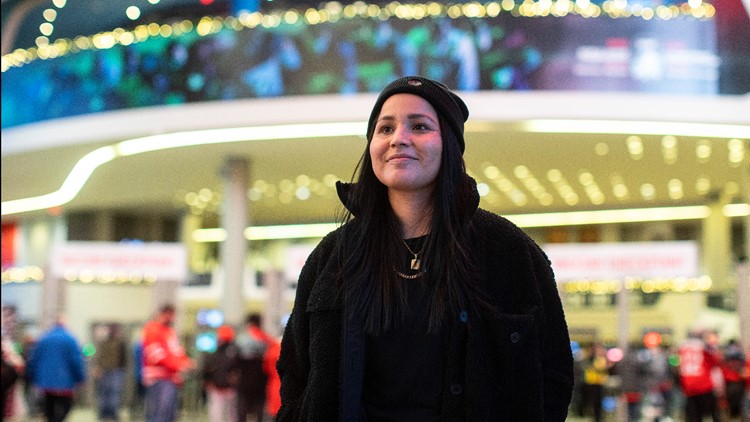CALGARY, AB — Brigette Lacquette recalls trying out for her first summer hockey team with her sister and the unwelcoming vibe in the dressing room.
The First Nations siblings from Mallard, Manitoba, had already navigated the barrier of extensive, expensive travel just to be there.
“They all just kind of stared at us. No one said, ‘Hi.’ No one said anything. We sat on one side of the dressing room and they just stared at us. I remember how uncomfortable of a feeling that was,” Lacquette told The Canadian Press.
“I got cut and then I went to another team and I’m still friends with at least five or six girls on that team from when I played hockey at 11 or 12 years old," she said. "They were so open and accepting. They didn’t care about the color of our skin. They just cared if we could play hockey or not. Then they made it a point to talk to us and made us feel comfortable.”
The defender on Canada’s Olympic women’s hockey team in 2018 is now a Chicago Blackhawks regional scout and the first Indigenous woman to scout in the NHL. The 29-year-old Lacquette also serves on the NHL’s player inclusion and female hockey advisory committees.
“Right now, I’m so passionate about diversity, equity and inclusion, especially in hockey,” Lacquette said.
She’s a spokeswoman for a program designed to foster those elements in the sport, and one that is accelerating the work of a female hockey association on Canada’s east coat. About 30% of the Cape Breton Blizzard Female Hockey Association is Indigenous, Black or people of color.
Not only was the Blizzard one of 15 associations to receive a $10,000 grant from Kruger’s Big Assist program, it was awarded an additional $50,000 via The Second Assist for its work with two First Nations communities as well as with newcomers to Canada.
“They’re promoting inclusion by creating teams in First Nations communities and developing all-female referee crews and training female coaches and things like that, so I feel like they’ve done a lot for their community,” Lacquette said. “Traditionally hockey is a white man’s sport, so kind of changing that narrative of it just being strictly a white-man’s sport.
“Hockey is for everyone,” she added. "It is important to promote diversity, equity and inclusion in the sport and making sure kids are comfortable signing up for associations and having teammates that understand everyone has a different background and a different story.”
Lacquette and two siblings playing hockey stretched her family's finances. The Cote First Nation helped cover some costs, but the same challenges face Eskasoni First Nation girls in eastern Cape Breton wanting to play hockey.
A barrier to playing games there included a lack of certified referees, which Blizzard association president Christina Lamey said was a problem quickly fixed. The Cape Breton Blizzard Female Hockey Association has doubled in membership in two years to 300 playing on 18 teams.
Roughly 90 hail from the Eskasoni and Membertou First Nations and another handful from Whitney Pier, which is historically an area of Black and newcomer communities.
“In reaching communities who have historically been excluded from the game, I never use the term under-represented because they always wanted to play,” Lamey said. “The want was there.”
Since parents drive hockey associations, getting those without a hockey background into the game was key, she said. Covering the cost of goaltending equipment — because a league can’t survive without goalies — and developing First Nations coaches were other ways the association grew its membership.
“I am specifically working next year on having our first Indigenous female referees,” Lamey said.
Watch more of Minnesota sports:
Watch the latest sports videos - from high school hockey to the Minnesota Vikings and everything in between - in our YouTube playlist:



